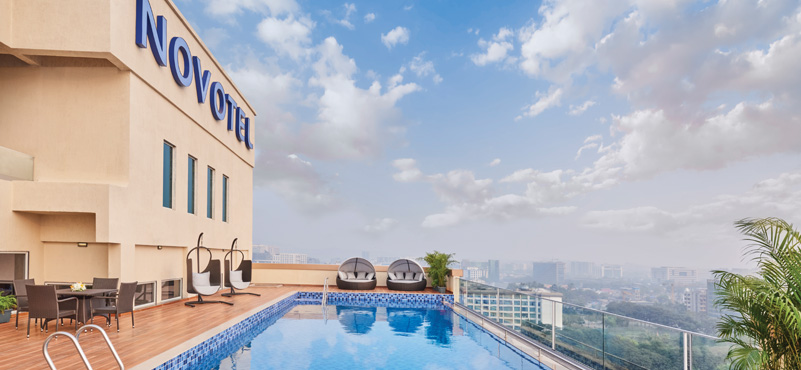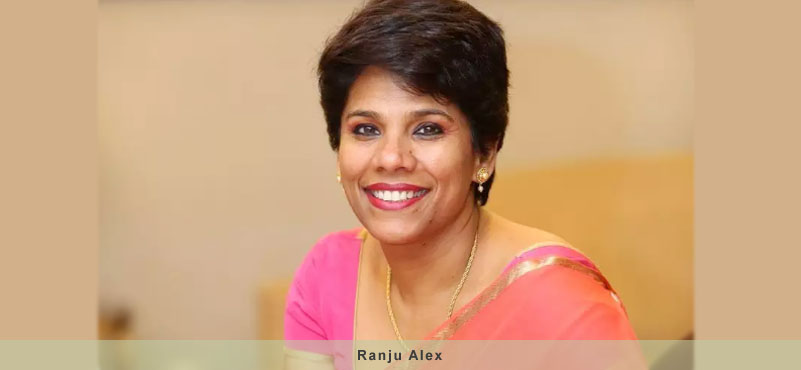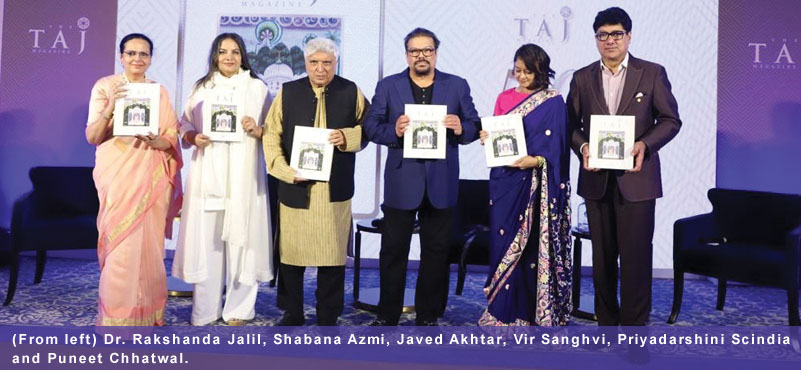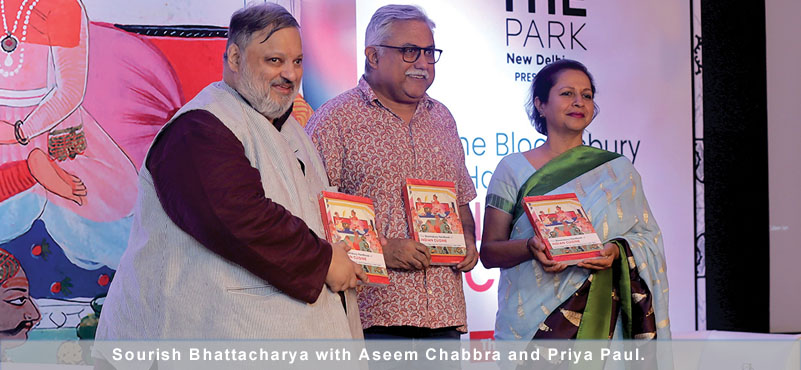Post the covid disruptions that cost the industry near death, there are signs of good growth ahead, across multiple price points, especially in tier 2 and 3 cities.
It is the topic of these times. The hotel rates have caused acute concern among the less fortunate travellers. In leisure destinations, it has become commonplace to get quotes of upwards of `25,000 per night, that is, if you are lucky. Most weekends, there are no rooms to be had. Hotels business has not seen this kind of sudden growth, for a long time. To be fair to them, they were the first to suffer when covid struck. They were also the last to recover. What does the immediate future hold? For them, and for the traveller? We reached out to a select group of majors, checking out the business environment, where growth is expected.
The good news is that most chains are spreading themselves across price points; it is not just five-star. In fact, the mid-market is showing the greatest promise.
These chains are bullish on future growth. We check out, like where, with what brands and with what expectations, are they looking ahead? What kind of time horizon do they see where demand will be more than supply, which is what is happening at present? How do they see the rates going, as we go forward?
Industry has bounced back, the immediate future looks good;
long-term, will depend upon numerous factors
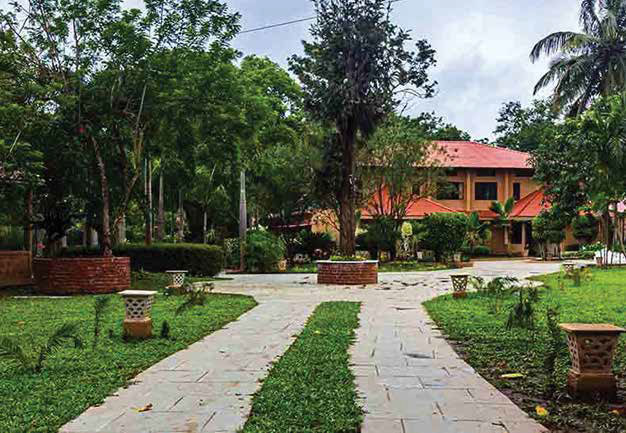

Our chain is pursuing aggressive expansion plans to increase market share, diversify revenue, and stay competitive. However, future growth plan requires careful planning and execution due to cost, risk, and potential challenges. We currently have 24 hotels in the pipeline which are Regenta Resorts, Regenta Central and Regenta Place, aiming to open before September. Additionally, we have an ongoing international project in Sri Lanka.
Predicting the exact time horizon when demand will surpass supply in the Indian hospitality industry is challenging, as it depends on various factors such as economic growth, tourism trends, government policies, and infrastructure development. However, I can provide some insights based on the general trajectory of the industry.
- Economic growth and rising middle class: Expanding middle class with higher incomes leads to increased domestic travel and demand for hospitality services.
- Tourism growth: Steady growth in domestic and international tourism due to government initiatives and infrastructure development.
- Business and MICE tourism: India becoming a popular destination for business meetings, conferences, and exhibitions, driving demand for hotels and conference facilities.
- Infrastructure development: Government investments in airports, highways, and tourism projects improve accessibility and attract more travellers.
- Rising aspirations and travel culture: Growing inclination to explore new destinations and experience different cultures, supported by social media and online travel platforms.
- Continued growth: Expectation of long-term growth in demand for hospitality services, dependent on economic growth, tourism trends, and industry’s ability to meet evolving demands.
I can provide some insights into the sustainability of the supply chain in the Indian hospitality industry. However, please note that the hospitality industry is subject to various factors, including market trends, government policies, and economic conditions, which can affect its sustainability.
- Local sourcing: Hotels and restaurants focus on local and sustainable products for a resilient supply chain, supporting local farmers and promoting eco-friendly practices.
- Organic and eco-friendly products: Growing demand for organic food, eco-friendly cleaning products, sustainable packaging, and energy-efficient equipment in the hospitality industry.
- Waste management: Implementation of recycling programs, composting, and reduction of single-use plastics to address waste concerns. Partnerships with waste management companies for proper disposal and recycling.
- Energy and water conservation: Adoption of energy-efficient technologies like LED lighting, smart thermostats, and occupancy sensors. Water-saving initiatives including low-flow faucets, toilets, and rainwater harvesting.
- Renewable energy adoption: Increasing interest in renewable energy sources with the installation of solar panels on hotel rooftops to reduce reliance on traditional energy and lower carbon footprint.
- Training and awareness: Conducting programs and workshops to educate staff and suppliers about sustainable practices, aiming to foster a sustainable mindset in the industry.
It is important to note that the sustainability efforts in the Indian hospitality industry may vary among different establishments. While some businesses have taken significant steps towards sustainability, others may still have a long way to go. The overall sustainability of the supply chain in the Indian hospitality industry will depend on the collective efforts of businesses, government regulations, consumer preferences, and the industry’s commitment to sustainable practices.
Regarding rates, currently the hospitality is getting back to its position which we had seen 3 years back. Now, the industry is in full swing so we say more gap to fill in terms of ARR. But at the same time the rates in the current market can be influenced by several factors. These factors include demand and seasonality, economic conditions, competition and market positioning, supply and demand balance, and government policies and regulations.
It is important to consider that the hospitality industry is dynamic and can be affected by various market forces. Factors such as local events, festivals, economic conditions, and industry competition can impact room rates. Additionally, the specific location, type of hotel, and target market segment can also play a role in determining room rates.
So much will depend upon individual situations, the challenges and the individual responses.
IHCL Brands Ride the Growth Wave in Indian Hospitality
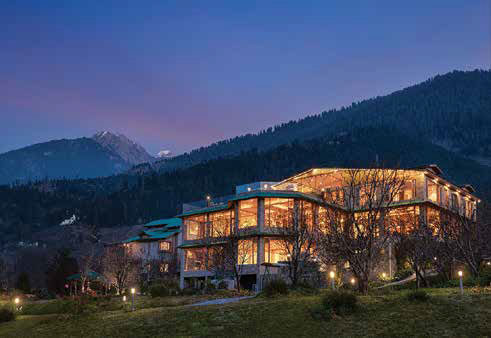

Executive Vice President Real Estate & Development, IHCL
India is on a growth path and the services sector including the travel and tourism business is emerging as a major growth engine for the Indian economy. Tourism will be one of the most important pillars of the nation’s growth with its multiplier effect on economic prosperity and employment generation. As per World Travel and Tourism Council (WTTC), the sector is expected to create nearly 126 million new jobs globally within the next decade with at least 20% from the Indian sub-continent. We believe that Indian travel and tourism is at an important inflection point today.
IHCL’s brand scape lends itself to scaling in a heterogenous market like India. Leveraging the brand portfolio, IHCL is present in over 125 destinations in India with over 250+ hotels. In line with our strategy, Ahvaan 2025, we are well on our way to being a 300+ hotel portfolio with a balanced mix of managed and owned / leased hotels.
A glimpse into our recent growth journey.
TAJ LEADS IN THE LUXURY SEGMENT
The iconic luxury brand and the World’s Strongest Hotel Brand, Taj has crossed the 100-hotel milestone. In line with its strategy of pioneering new destinations, Taj announced two resorts in Lakshadweep. Building its presence in state capitals Taj signed two hotels in Gandhinagar and Raipur. Strengthening its footprint in metro cities of Chennai, Bengaluru and Delhi, IHCL added a Taj hotel in each city and continued focus on key international markets with the signing of a Taj hotel in Riyadh, Saudi Arabia and Dhaka, Bangladesh.
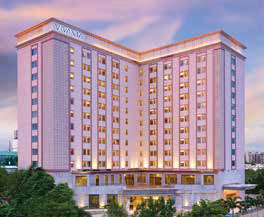
Enhancing its leisure offerings, the past year saw the opening of Sawai Man Mahal Palace and Taj Amer in Jaipur, Taj Wayanad, Kerala and added Taj City Centre New Town in Kolkata.
ACHIEVES BALANCED PORTFOLIO
IHCL, as envisioned in its Ahvaan 2025 strategy, achieves a balanced portfolio in FY 2022- 23 of owned/ leased and managed hotels. This was driven by management contracts accounting for 60% of the new signings. The balance 40% predominantly comprised of operating leases for the Ginger brand and a few select investments in Ekta Nagar and Lakshadweep.
GROWTH THROUGH CONVERSIONS
Fuelled by the power of IHCL’s brandscape, the past year saw a significant growth in the number of conversions led by IHCL SeleQtions, the brand with a distinctive and compelling character. This is in line with IHCL’s strategy to proliferate its brands and hotels with a shorter time-to-market and is testament to the robust customer proposition of SeleQtions. Hotel conversions were secured in Rajkot and Mahableshwar and operating hotels were opened including Anand Kashi by the Ganges, Rishikesh, Norbu The Montanna, Dharmashala, Jaagir Manor, Dudhwa, Baragarh Resort & Spa, Manali and Yellow House Anjuna,Goa .
EXPANSION IN TIER 2 & 3 CITIES
Apart from the metro cities in India, the smaller cities with lesser share of branded rooms have witnessed tremendous growth. Tapping into the opportunity IHCL has built a strong pipeline in tier 2 and 3 cities including Vivanta in Jammu, Haridwar, Vrindavan, Indore, Jamshedpur, Rajahmundry, Katra, and Shillong among others and Ginger in Gangtok, Durgapur, Asansol, Nagpur, Ayodhya, Paradeep, Bharuch and others.
While demand will continue to grow by double digits due to the strong domestic travel segment and a rebound in inbound tourism, the supply is expected to grow by 3 to 4 %. This will drive up the rates in the medium term.
India Remains a Relatively Under penetrated Market
Rates are getting commesnurate to our Quality and Standards
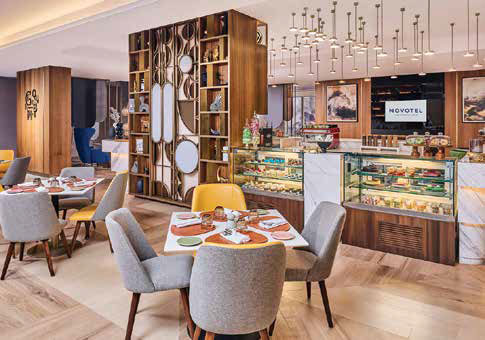
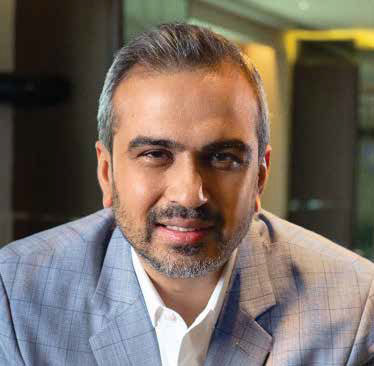
Sr Vice President of Operations – India & South Asia, Accor
Currently we have 58 operating Hotels in India across 9 brands. Our focus is to aggressively expand in Tier 2 and Tier 3 markets in India. We are actively exploring opportunities to introduce our economy and mid-scale brands through management contracts or franchise arrangements in emerging markets.
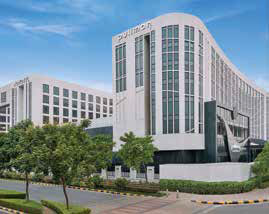
For instance, we have received positive response and success with our Novotel properties in Guwahati and Lucknow, which has encouraged us to focus our energies in developing more properties in Tier 2 and Tier 3 cities. Our most recent opening is the Novotel Jodhpur adding to our footprint in the state of Rajasthan and is the 23rd Novotel in the country. Last year we signed 10 new hotels mostly across Tier 2&3 markets – 02 hotels in Chandigarh, 01 in Bhopal and 01 in Indore solidifying our presence in these upcoming hubs.
Fairmont brand is gaining momentum in India and we will see a strong presence for the brand in the future. We signed the Fairmont Udaipur, Fairmont Shimla and Fairmont Agra in the last few months. The future pipeline for our brands looks very robust.
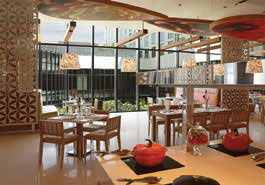
During the height of the pandemic, the supply of hotel rooms was significantly impacted as many properties were temporarily closed or put on hold. However, as the world gradually emerged from the pandemic and travel started, there is a resurgence in demand. Travelers are eager to explore and experience new destinations once again. The current trend suggests that the supply of hotel is keeping pace with the growing demand, as evident in stronger occupancies throughout the country. Several factors like pace of recovery, evolving travel patterns, and market dynamics play a role in determining the balance between supply and demand.
In terms of branded Hotel rooms supply, India still has much room to grow with only 160,000 rooms which are less than a city like Dubai. Both the business and especially leisure destinations are under penetrated. With the growing demand trends, supply has also seen a positive growth. We have 30 hotels in the pipeline with more than 5 openings slated for this year. Post the pandemic, there is a renewed interest in building hotels across every segment- luxury, premium, mid and Eco brands. This is being driven on the base of increased average rates giving the owners confidence of a faster return on investments. Occupancy levels in India are still at around 60%-65% mark and the current rooms inventory can absorb a lot more before we reach supply outgrowing demand.
Indian hospitality sector is in very strong position to continue the rate growth, I call it more of a rate correction vis a vis the rest of the world and the level of service that we offer to our guests. Coming out to the pandemic owing to the strong domestic demand surge, improving infrastructure, entry of new industries in India and the start-up mind set in the country are some of the key factors that give us the confidence for a positive rate growth story in the next three to five years.
Strong Demand Ahead, as Indian economy is on Strong Growth Curve
Hospitality will keep Pace with this Growth
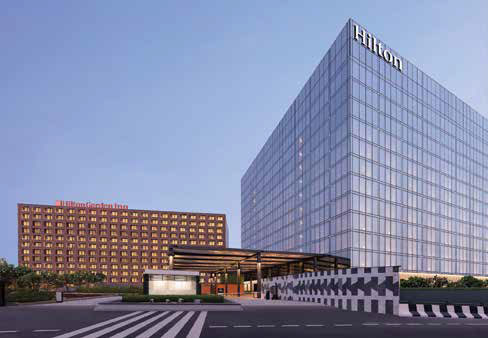
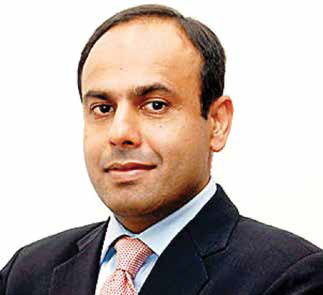
Senior Vice President and Country Head-India · Hilton
Travel is an unstoppable force. People travel because they seek the experiences they can get only when they leave home. The hospitality industry remains a good inflation hedge because we have the ability to reprice rooms every night. This gives us added tools to manage within a dynamic environment. Brands today are wanting to create reliable and friendly experiences across every stay occasion for their guests and deliver best in class returns for stakeholders. The segment today shows signs of evolving on certain key parameters like increasing demand for exclusive, immersive and bespoke experiences and personalized service elements. On the back of a very positive and strong domestic demand, growth in the hospitality sector is being seen across metros and non-metros. People are preferring to travel to virgin and unexplored destinations which had led to an increased demand of rooms in non-established locations. It is a good sign to see the business confidence restored back in the growth of travel. Current rates that cities like Mumbai, Bengaluru and Chennai are demanding are strong due to the uptick in MICE and business travel. ARRs are definitely higher, as a direct derivative of demand improvement. The sector has also benefitted from specific events like G-20 and we continue to see international travel to India also picking up.
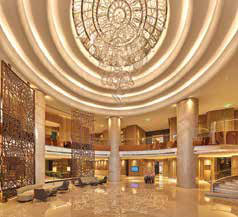
We, at Hilton Hotels, are at a pivotal moment in India and our future is very much ahead of us. We have strong world-renowned brands and will work with strong local partners to launch the right hotels, with the right brands, in the right locations. India has a strong growth potential in the medium term, particularly in the mid-scale & upscale segments and that makes us very optimistic about the year ahead. Compared to pre-pandemic levels, corporate business in India is already back to 75%, while MICE business is back to 92% and our booking pace is +43% YOY and in line with 2019.
India is among Hilton’s best performing markets in Asia. India has seen Hilton deploy 5 brands across 24 hotels in the estate – and we plan to double this in coming years. Despite being one of the smallest sub-regions in APAC, India has a strong growth potential in the medium term.
India recently surpassed the UK and became the 5th largest economy, which will consist of the youngest population with ambitious aspirations. India is also poised to overtake China as the world’s most populous country this year. Increasing discretionary spend within the upper and middle class has fueled demand for luxury brands over the last decade. Strengthening presence and awareness of the Conrad & Waldorf Astoria brands will also provide an opportunity for reputation and loyalty for our other brands in this market. We have major expansion plans for India from both a domestic and outbound perspective and look forward to eventually introducing more of our brands in the country.
We will be focusing on driving Hilton’s reputation and enterprise awareness across all key markets in India. Solid progress is being made with openings in Bangalore and signings in Gurgaon, Nagpur and Jaipur that will help bridge the network effect. We are grounded by our resilient business model, powerful commercial engine, and portfolio of industry-leading brands.
150 Hotels Going, Radisson on course with 12/15 new signings and 10-12 openings every year!
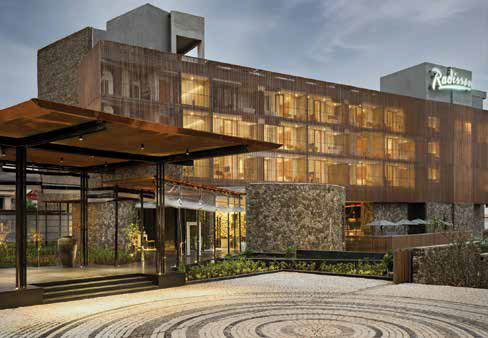
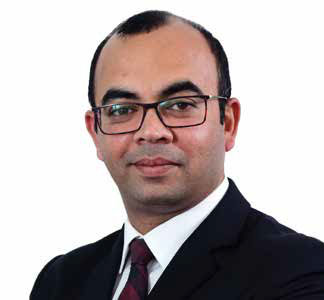
Managing Director & Area Senior Vice President – South Asia, Radisson Hotel Group
When the pandemic hit, India’s hotel industry saw three key metrics plunge – average daily rates, occupancy rates, and revenue generated per available room (RevPAR). This fiscal year, the industry not only improved on all three important metrics, but it also remained on a growth trajectory.
In FY24, the pan-India average hotel occupancy is expected to be at 67-69%, with Average Room Rate (ARR) at INR 6,200-6,400, as per a recent report by agency CARE. The demand outlook for the industry is positive, indicating a promising future with Indian hotels set to grow in FY24 despite uncertainties.
In terms of supply, while there was a setback due to the pandemic, a majority of projects are back in action with over 60,000 rooms expected to join this supply in the next 5 years in big-ticket markets such as Bangalore, Mumbai, Delhi, Hyderabad, Jaipur. The strong growth of domestic travel will help open up new destinations in India, especially in tier-2 to 3 markets. We foresee that these markets will drive India’s next supply growth phase. For instance, pilgrim locations have stepped up as important emerging destinations.
With 150 hotels in operations and pipeline across 64 locations in India, we at Radisson Hotels are looking at doubling our footprint by 2025. We have a robust pipeline for the future and will continue our growth trajectory with 12-15 hotel signings and 10-12 hotel openings every year.
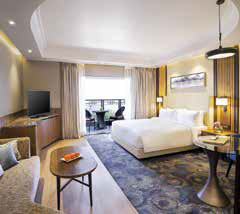
With a diverse portfolio of nine brands in India, including Radisson Blu in the upper-upscale segment to vibrant and stylish hotels under Radisson RED, RHG is ready to meet the increasing domestic travel demand; we have some beautiful and brand-defining hotels across key locations like Pahalgam, Kufri, Palampur, Udaipur, Goa, Pondicherry, Lonavala, Nashik, Karjat among others.
We have launched multiple initiatives like WOW – our guest experience program that aims to ‘wow’ the guests from check-in to check-out. With dedicated brand programs like Rad Family and Rad Pets, we are catering to the demands of families traveling with children and pet lovers.
Current trends such as staycations and Bleisure travel have become more experiential and becoming mainstream; thus, the idea of Radisson Individuals Retreats – an extension of Radisson Individuals. With the opening of the Rakkh resort, a member of Radisson Individual Retreats, we entered the era of experiential hospitality in the country.
We are driven by innovation when it comes to culinary experience and the Group has always been in the forefront of creativity for enhancing its Food & Beverage offerings. We have created ‘Top 20’ Signature dishes for our guests to experience the locale, as we use local produce and traditional cooking methods for preparing a memorable meal for them. We also opened our first outlet of “Meetha”, a premium offering of curated Indian sweets in Mumbai with plans to expand it across India.
We have been consistently intensifying our sustainable business efforts to provide authentic and mindful experiences that also benefit the earth. To be a permanent solution to environmental problems while also balancing its economic impact, we have launched various initiatives such as Soap for Hope, Linen for Life, and Flush Me Not Program which are built on our long tradition of being a responsible business.
We are investing in best-in-class operational technology to enhance the day-to-day planning and productivity of our hotels. We are also integrating new ‘safe travel’ and contactless technologies into the design of our hotels to prioritize the safety of our guests as well as our workforce.
We will continue to expand our presence while meeting the growing demand and aim to cross the 10,000 keys mark by the end of the year
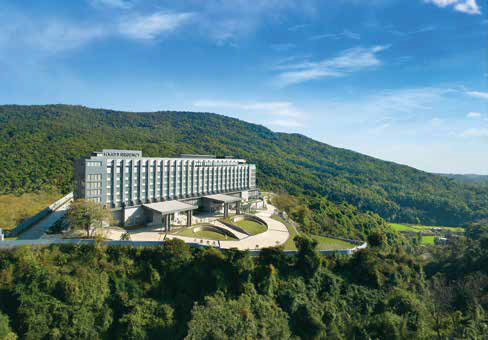
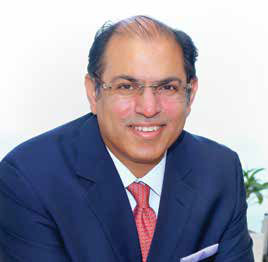
Managing Director, India & Southwest Asia, Hyatt India Consultancy Pvt. Ltd.
Hyatt recorded tremendous growth in the third and fourth quarters of 2022 primarily driven by the leisure segment which has been a significant driver of our optimistic performance in the past year. We have witnessed a surge in tourism in the country, primarily fueled by workcations, staycations, and weekend getaways. Recognizing this changing consumer preference, Hyatt anticipates that more Indians will be interested in extending their business travel plans to include bleisure trips. Moreover, our wedding business also witnessed 200% growth in the quarter as compared to Q1 of 2019.
Keeping this in mind, we launched nine new properties in India last year, and we plan to continue this growth momentum and aim to launch an additional 10 hotels in 2023. We recently announced the entry of the Hyatt Centric and Hyatt Place brands in Uttarakhand, with Hyatt Centric Rajpur Road Dehradun and Hyatt Place Haridwar. Additionally, Hyatt is set to introduce the ‘JdV by Hyatt’ brand in India this year. This move aligns with our objective of diversifying our portfolio of hotel offerings in both existing and emerging markets. Our goal is to have over 50 Hyatt-branded properties in India by the end of 2023.
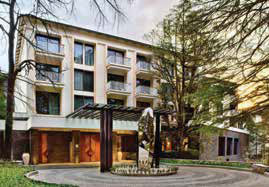
Hyatt has already experienced impressive growth in revenue per available room (RevPar), surpassing 2019 levels by 125% in the fourth quarter of last year. Moreover, in the first quarter of this year, we witnessed a remarkable growth of nearly 175% in its leisure group business and an 80% growth in its corporate group business compared to the same period in 2019. These positive trends indicate a strong demand trajectory that shows no signs of slowing down.
While domestic demand has played a significant role in driving this growth, the potential of international demand remains largely untapped. As international travel gradually resumes and reaches its full scope, it is expected to further boost demand for Hyatt’s offerings.
Considering the sustainability of supply, we have been actively expanding our portfolio, and currently operate 41 hotels and eight distinct Hyatt brands across the country. With more launches in the pipeline, we will continue to expand our presence while meeting the growing demand and aim to cross the 10,000 keys mark by the end of the year. As for rates, with the demand consistently surpassing pre-pandemic levels and the potential for international demand to kick in, it is likely that rates will experience an upward trend.
The Leela – Focused on authentic experiences that define true Indian luxury
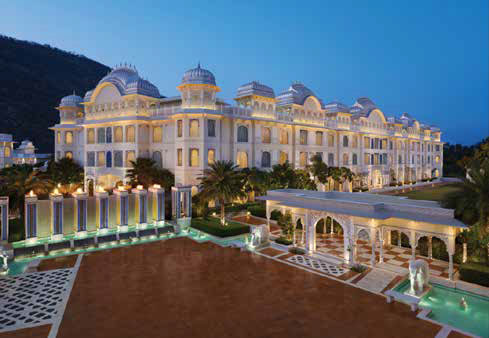
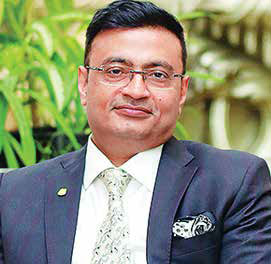
CEO, The Leela Palaces, Hotels and Resorts
As a quintessential Indian hospitality luxury brand, we celebrate each hotel through its unique location, art, culture and cuisine with thoughtful services, celebratory rituals, and immersive experiences, all delivered with the warmth and graciousness of Indian hospitality.
The Leela is a pure play luxury brand and will always remain so. We want to be the epitome of true Indian luxury and bring to life the essence of India and the richness within with authenticity, always staying true to our brand DNA. Our expertise lies within the luxury space and this is what has helped us carve a niche for ourselves.
Our focus has been on building the brand so we can stay relevant to the evolving needs of the discerning global traveller and capture share of mind and wallet.
The understanding of luxury has always been highly contextual and evolving over time. Luxury travel has transcended material focused luxuries and comforts to include access, authentic and personalized experiences that connect with the broader community. Guests no longer long for escapes but rather seek connections with their surroundings.
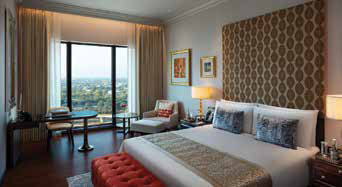
In this age of hyper personalization, it has become important to curate experiences that are tailor made and resonate with the customer. We implemented programmes that help elevate the guest experience and strengthen the positioning of the brand as a leading luxury hotel brand true to its Indian heritage; driving demand through compelling and meaningful offers with inclusions and value additions built in around what matters most to our guests.
Post Covid, for the guest, experiences have become a key differentiator. At The Leela we have dialled up on experiences. For example we introduced Ceremonial rituals across our hotels. As day transitions to night, our hotels come to life with the traditional diya lighting ceremony together with a sensorial immersion into the culture of the destination, creating a unique sense of place.
When it comes to luxury hotels, the upsurge in demand post covid has shown us that travelers are willing to pay more for a differentiated and personalised experience.
At The Leela we have therefore looked at collaboration and association as a key strategy. We collaborated with The Jaipur Literature Festival, India Art Fair and with Rajasthan Polo Club and the royal family of Jaipur to provide our guests access like no other and curated Icons of India as a platform to celebrate India’s finest who are the world’s best and give our guests insider access to special experiences that resonate with their passions.
With the reopening of markets the hospitality industry is back on track. We are seeing positive indicators for return of corporate travel which is picking up. ARRs are higher, and occupancy rates are good. While weddings drove the industry last year, the inbound market will play a crucial role this year.
While resorts were major growth drivers until now, we expect future growth to come from city hotels as corporate travel begins to gather momentum. All our new hotels The Leela Palace Jaipur, The Leela Gandhinagar, The Leela Bharatiya City and The Leela Kovalam have ramped up business very well and have exceeded budgets.
While we are looking at growing in key gateway cities, marquee leisure destinations and in the wellness and wildlife space, growth in number of hotels is not our story. We are building our brand with our services, and pronounced emphasis on giving luxury an experiential nuance for our guests.

